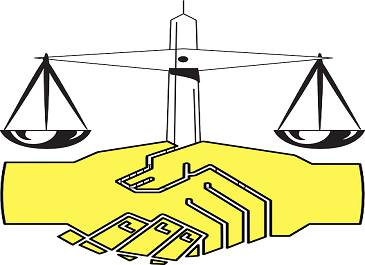Government takes steps to delink medical devices from pharmaceutical regulations
December 14, 2015 | Monday | News | By BioSpectrum Bureau
Government takes steps to delink medical devices from pharmaceutical regulations
India is import dependent for 70 percent of its medical devices
Responding to the long standing demand of medical device industry to delink it from pharmaceutical sector, the government has taken initial but firm steps towards this finality. The intention to achieve this objective has been spelled out after a meeting of senior officials of MoH and FW, Govt of India and CDSCO with Industry Representatives including AIMED.
The ministry will shortly be soliciting public opinion/comments through CDSCO website and issue a notification for change in Drug Rules through the Law Ministry for enabling this de-linkage.
It may be noted that the irrational traditional linking of medical device sector with pharmaceutical through common statute and regulatory regime has been a big stumbling block in unlocking the full potential of this critical sector and had contributed to India's humungous import dependency, while scaring away investment. Nowhere in the world are pharmaceutical and medical device sector governed by the same set of legislations as has been historically happening in India.
"Indian Medical Devices have for long been incorrectly and incompletely regulated. This has been confusing overseas and Indian investors who were scared to invest with a pharmaceutical type GMP demands being imposed by regulators in an arbitrary and prescriptive manner by unsure inspectors on an engineering industry. The government has taken the first correct strategic steps in the appropriate direction to address the ambiguity" said Mr Rajiv Nath, forum coordinator for AIMED. "Make in India of medical devices is now a possibility if Government also makes it viable and profitable to invest by also simultaneously addressing the adverse inverted duty structure."
Mr Nath has pointed out that the next steps to realize the dream of robust domestic medical device industry which is aligned to PM Modi's vision of 'Make in India', it is hoped that country will soon adopt a risk proportionate regulatory framework whereby medical devices of low Patient Safety risk like wheel chairs have a lower regulatory requirement and moderately risky devices like Needles have a higher regulatory requirements and high risk devices like orthopedic implants and cardiac stents have even higher regulatory compliance requirements.
This should be followed by unbundling of regulations and regulatory controls whereby the regulators need to delegate the task of compliance audit of manufacturers to Third Party Competent and Accredited Conformity Assessment and Certification Bodies.
"It's impossible for an individual regulatory inspector to have domain knowledge expertise of wide and diverse range of ever changing innovative technologies deployed in producing medical devices from material sciences to biochemistry to metallurgy to atomic sciences to radiology to microbiology to nanotechnology and now wearable digital mobile phone based applications," pointed out Mr Nath.
Currently India is import dependent for 70 percent of its devices and lack of an internationally equivalent regulatory framework has been a major factor as investors stood on sidelines watching this market grow unsure of government intent and discouraged by the initial move of 22 medical devices being regulated as drugs by CDSCO and State Drug Controllers.
It may also be known that a amendment bill for making required changes in the Drugs & Cosmetic Act, 1940 to enable medical devices to be regulated has been already been tabled in the Parliament and is in the long queue of many Legislations awaited for bringing reforms!
"Even that is a half hearted measure whereby our concerns of total delinking with Drugs regulations have not been fully taken into account. There needs to be a separate Law Book - separate Rule Book and separate Regulatory Authority or a revamped CDSCO as an Indian Healthcare Products Regulatory Authority (IHPRA) or regulators may continue to see medical devices from prism of drug regulations if they pick up a common Laws and Rule Book," said Mr Nath .
In traditional mode of regulations worldwide earlier, Govt. was the Regulator and prescribed requirements for Manufacturing and directly checked Compliance through Inspectors and directly punished errant Manufacturers thereby creating conflict of interest. As Regulators worldwide are getting increasingly stretched for resources and the required Technical Expertise the various Components of a Regulatory Framework are getting unbundled and India needs to imbibe similar Best Practices and bring in further regulatory reforms for Medical Devices explained a regulatory expert.
"Regulations in India need to be layered to separate Role of Legislature from those of a Regulator and those of a supervising Accreditation Body to assist the Regulator, from those of Third Party Conformity Assessment Bodies who will Audit the Manufacturer in line with our honorable Prime Ministers Key Policy principle :Minimum Govt. - Maximum Governance. European Commission and USFDA have already gone this way, In India PNGRB has set an example and FSSAI has all the progressive provisions in its regulations. Such regulatory framework for medical devices will also create higher international acceptance for Indian Products" said Mr Jauhri , CEO of National Accreditation Board for Certification Bodies, Quality Council of India.
"In India there has been no onus on manufacturers to demonstrate Compliance. There is a need to provide this layer whereby Manufacturers voluntarily use accredited 3rd Party Conformity Assessment Bodies to verify & certify their Compliance level to regulations," said Mr Jauhri.










